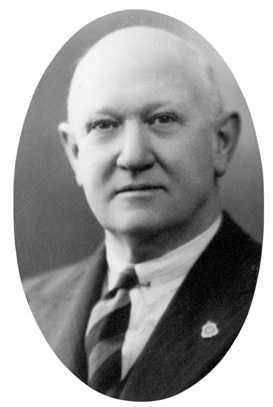Ross McLarty facts for kids
Quick facts for kids
Sir Ross McLarty
KBE, MM
|
|
|---|---|
 |
|
| 17th Premier of Western Australia | |
| In office 1 April 1947 – 23 February 1953 |
|
| Monarch | |
| Governor |
|
| Deputy | Arthur Watts |
| Preceded by | Frank Wise |
| Succeeded by | Albert Hawke |
| Member of the Western Australian Parliament for Murray-Wellington |
|
| In office 12 April 1930 – 31 March 1962 |
|
| Preceded by | William George |
| Succeeded by | Ewart Runciman |
| Personal details | |
| Born | 17 March 1891 Pinjarra, Western Australia |
| Died | 22 December 1962 (aged 71) Pinjarra, Western Australia |
| Political party |
|
| Spouse | Violet Olive Margaret Herron |
| Military service | |
| Allegiance | Australia |
| Branch/service |
|
| Years of service |
|
| Rank | Lieutenant |
| Battles/wars | First World War Second World War |
| Awards | Military Medal |
Sir Ross McLarty (born March 17, 1891, died December 22, 1962) was an important Australian politician. He was the 17th Premier of Western Australia, which means he was the leader of the government for the state of Western Australia. He served in this role from 1947 to 1953.
Early Life and Military Service
Ross McLarty was born in Pinjarra, Western Australia. He was the youngest of seven children. His father, Edward McLarty, was a farmer and grazier who was also involved in politics. Ross went to school in Pinjarra and then to Perth Boys' High School.
In 1916, when he was 24, Ross McLarty joined the Australian Army. He became a corporal and then a sergeant. He fought in the First World War on the Western Front. In 1918, he was given the Military Medal for his bravery during a battle at Passchendaele.
Later that year, he became a lieutenant. During the Second Battle of the Somme, he was injured in his left hand. After the war, he returned home.
Back in Pinjarra, Ross McLarty went back to farming. In 1922, he married Violet Olive Margaret Herron. He also became a justice of the peace and was part of the Returned Sailors', Soldiers' and Airmen's Imperial League of Australia, which supports veterans.
Starting a Political Career
Ross McLarty decided to enter politics. In the 1930 state election, he ran as a candidate for the Nationalist Party. He won the seat of Murray-Wellington in the Western Australian Legislative Assembly. This is like being a member of parliament for a specific area.
His party was in opposition for 14 years after the 1933 election. This means they were not in charge of the government. In 1946, the Nationalist Party joined with another group to form the new Liberal Party. Ross McLarty became the leader of this new party.
Becoming Premier
In the 1947 state election, Ross McLarty's Liberal Party, working with the Country Party, won the election. This was a surprise victory. Because the Liberal Party had more members than the Country Party, Ross McLarty became the Premier of Western Australia. This is the top political job in the state. His deputy, or second-in-command, was Arthur Watts from the Country Party.
As Premier, Ross McLarty was also in charge of important areas like Treasury (money), Housing, and Forests. His time as Premier was a period of fast growth for Western Australia after the war. In 1950, his government worked with BP to build the Kwinana Oil Refinery. This refinery helped the area around it become a major industrial center. His government also accepted money from the Australian federal government to create the State Housing Commission, which helped build homes.
Ross McLarty was honored with a knighthood in January 1953, becoming "Sir Ross McLarty." He lost the next election in February 1953. However, he continued to be the leader of the opposition for another four years until 1957.
Throughout his time in politics, Ross McLarty often traveled back to his home in Pinjarra on weekends. He was also involved in local community work, like being the chairman of the Murray District Hospital Board. He had investments in farming, including a large farm called Liveringa station.
Ross McLarty retired from parliament in May 1962 due to poor health. He passed away in December of that year. He was given a state funeral, which is a special ceremony for important public figures. He is buried in the Pinjarra cemetery.
See also
- McLarty–Watts Ministry

